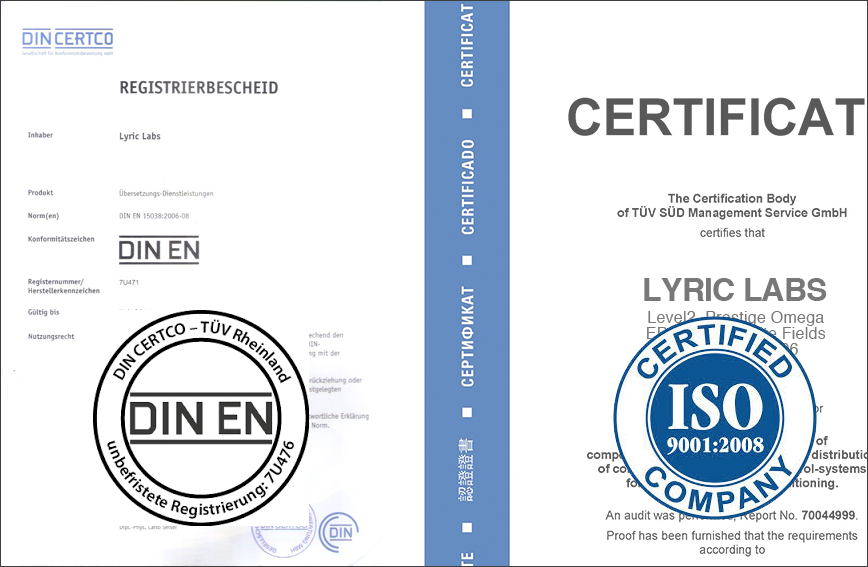Best practices for successful translation service
We provide guidance from industry experts and their experience guides many of our practices that solves complex translation requirements.
Accessible through the cloud, Our centralized project management platform that has been designed with best practices in mind. Wherever they are, in-house and remote project team members can provide the best support for our customers.



ISO 9001 | DIN EN 15038
Certified Company
We at Lyric, give utmost importance to quality and information security while engaging in translation services. We value trust and customer experience, and firmly believe that these aspects enable us to deliver timely and superior quality services to all our clients.

Consistency - Key to our customer relationship
Consistency is one of the primary quality measurements of translation. Terminology can be translated differently, depending on a given context. For instance, one source term (e.g., “file name” in English) can have multiple variations in the target language (e.g., “ファイル の名前”, “ファイル名”, “文書名” in Japanese). Having multiple translations for such terms is inevitable by nature. However, if inconsistent term translations occur in similar contexts or are used for the same product, it is confusing to users. Consistency in translations is critical to the readability of localized materials.

